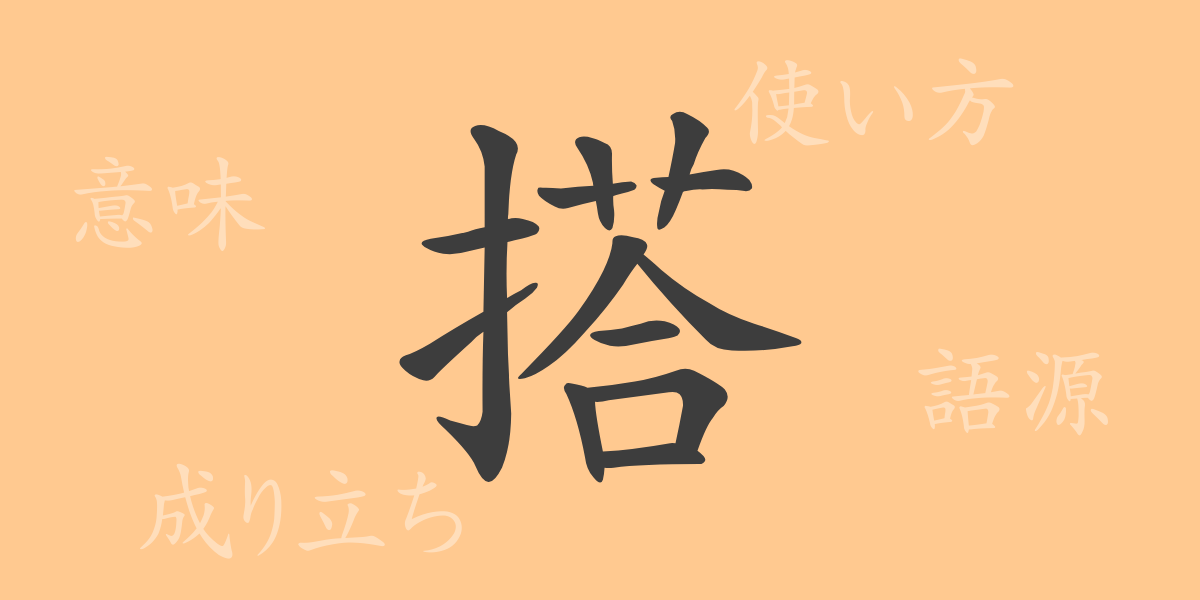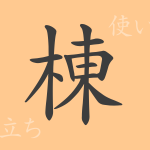Japanese culture and language are rich with history and meaning, and the kanji ‘搭 (トウ)’ illustrates this richness. While not commonly used in everyday life, its usage spans various contexts, telling the story of Japan’s linguistic diversity. This article explores the kanji ‘搭’, from its origins to its modern applications, including its use in phrases and idioms, unveiling the full scope of this character.
Origins of ‘搭 (トウ)’
The kanji ‘搭’ originated from ancient China, initially representing the upper structures of buildings. It is composed of ‘𡵅 (とうがまえ)’ representing the roofs or stairs of buildings and ‘手’, indicating the act of constructing by hand. Over time, ‘搭’ evolved to mean ‘to assemble’ or ‘to stack’, and has come to be used in various contexts.
Meaning and Usage of ‘搭 (トウ)’
‘搭’ primarily means ‘to stack’ or ‘to assemble’, but it also conveys abstract meanings such as ‘to be involved with’ or ‘to form a connection’. In practice, it appears in terms like ‘搭載 (とうさい)’ and ‘搭乗 (とうじょう)’, describing scenarios where objects or people are placed onto or board something.
Reading, Stroke Count, and Radical of ‘搭 (トウ)’
The kanji ‘搭’ offers insights through its structure:
- Reading: On’yomi ‘トウ’; there is no common Kun’yomi.
- Stroke Count: Total of 12 strokes.
- Radical: The radical is ‘手 (てへん)’, associated with actions or concepts involving the hands.
Phrases, Idioms, and Proverbs Involving ‘搭 (トウ)’
There are many phrases and idioms that include ‘搭’, each with a unique meaning. For example, ‘搭載’ means ‘to load equipment or cargo’, while ‘搭乗’ refers to ‘boarding a plane or ship’. ‘搭乗口’ indicates the gate for boarding an aircraft, and ‘搭桁 (とうけた)’ refers to a type of beam used in construction.
Conclusion on ‘搭 (トウ)’
This article has hopefully enhanced your understanding of the kanji ‘搭’ and its various meanings and applications. While it may not stand out as a frequently used kanji in everyday Japanese, it carries a wealth of historical and cultural significance. Understanding each kanji that makes up the language can deepen our comprehension of words. Next time you encounter ‘搭’, recall the knowledge you’ve gained here.

























